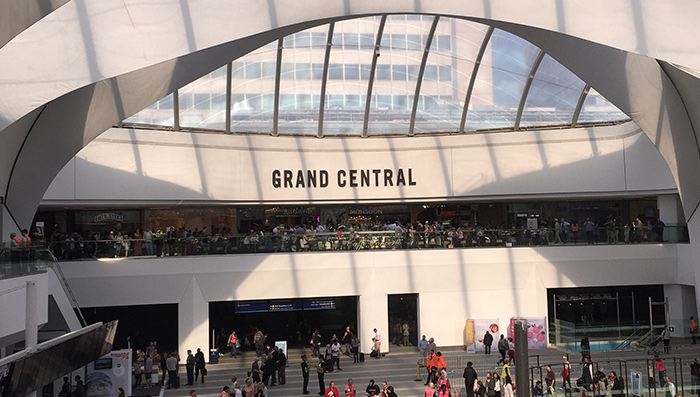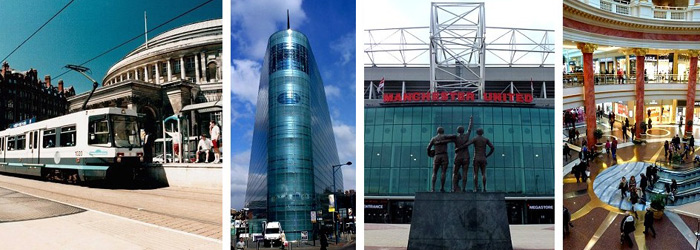Late last month, the primary rail station in England’s second biggest city unveiled the results of a £750m investment to redesign, revive and relaunch the city centre hub. Birmingham New Street Station services 170,000 commuters, tourists and visitors every single day but the out-dated design and state of disrepair has led to the receipt of unwelcome accolades such as ‘UK’s Ugliest Single Building 2003’ and the lowest score of all UK stations in a survey of overall satisfaction just last year.
Read The Landlord Link guide to buy-to-let in Birmingham >
Following five years of behind-the-scenes work and huge financial input, New Street now has plenty more to offer. Developers promise that rather than merely bringing it up to standard, the improvements will propel New Street towards being the busiest and most welcoming transport facility outside of London.
Whilst the previous look of Birmingham New Street Station was centred very much around concrete and steel, the new design includes a football pitch-sized atrium which allows for ample natural light. The entire passenger concourse is now five times the size of that at London Euston and a vast number of escalators and lifts have been installed to allow for easier access between platforms. These additions are aimed at improving the experience of all passengers utilising the station.
Rental properties for sale in Birmingham on The Landlord Link >
With a view to creating the ultimate in retail convenience, the project has also included the opening of Grand Central – nearly 500,000sq ft. of shopping and dining space – directly above the refurbished train station.
One of the largest John Lewis stores outside of the capital will act as the ‘anchor’ store in the development, alongside other leading names such as Foyles, The White Company, Hobbs, Kiehls and Paperchase. Eateries and refreshment stops include Fuel Juice Café, Caffé Concerto, Tapas Revolution, Pho, Giraffe and Yaki Nori.
Whilst Birmingham has always been a city with plenty going on, the culmination of years of regeneration work is an end product which will undoubtedly attract more commuters, visitors and students than ever before. The new ease of transport, coupled with the range of retail options now on offer has generated a real vibrancy in a city which has sometimes struggled to shift its reputation as being “grey” or “industrial”.
With all of this, plus Birmingham’s existing attractions such as the NEC Exhibition Centres, Cadbury World, Science Museum and one of the best sets of Christmas markets in the UK, there is a genuine buzz around the area. It seems that this Midlands city will be a real hotspot for residents, professionals and investors over the coming years.





